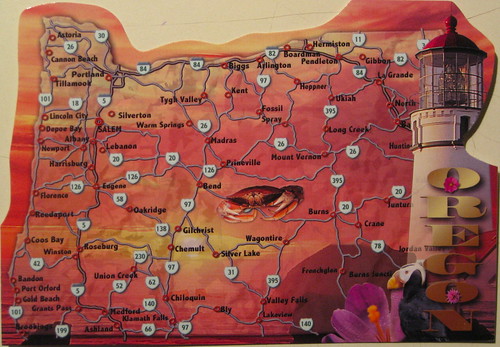As a few of you know, I spent various amounts of time living at a Zen temple in Okayama, Japan, the longest period for 3 months in 2007, and most recently for 10 days back in April. I can talk all about that in another post (and now that my selfprinted cards of Sogenji arrived, I have just the card to post in that post!), but I wanted to post these two cards that I sent from Okayama. Both are from a box of cards of the Korakuen, Okayama's famous garden. It can be hard to get postcards in Japan--these were the nicest ones that they had for sale at Okayama station, and they came in a box, all with these huge white borders around them. :/ The first is the very first card I sent from that trip, home to my two-year-olds, to let them know that I had arrived safely.
"Beautiful Lotus Flowers in Korakuen Garden and Okayama Castle"

Okayama castle was the stronghold of the Ikeda clan for most of Japan's feudal age, and the garden is the handiwork of one of the Ikedas, used as a personal spa by the daimyo, and for entertaining guests. I've never actually been inside either Korakuen or the castle, but I did bicycle right past the castle countless times on my way to the international center every free day. Actually one of the things I remember really fondly about Okayama is that bike ride... up over the Higashiyama hill, down the other side and all the beautiful fall leaves on the trees, past the playfields and the schools, over the Asahi River, watching for herons fishing, couples out in the swan boats, and the view of the castle up on the hill. Then I would turn from the main road onto the path through the park, passing people of various ages out walking, along the river, past the castle entrance, before turning again into downtown Okayama, through to the station, under the underpass, past the Market, and all the way to the international center where wireless awaited.
Besides that, Sogenji is also tied up in Ikeda-clan history: it was the family's summer-castle and hideaway in the mountains when enemies threatened. The graveyard behind Sogenji originally contained the remains of some of the feudal lords; now most of the remains have been removed to museums, but the graveyard is still there. Still bathed in sunlight on clear-weather afternoons, a quiet place to go sit, meditate or read or nap; still a haven for a wild mountain dog and her pups.
"A Scene of a Weeping Cherry Tree and Eisho Bridge in Korakuen Garden"

I was mailing these on my way to or during my stay at Sogenji, and thus could not spare any time at the post office for commemorative stamps. On the right is the normal stamp for the international postcard rate, featuring the great tit (it's a kind of bird, okay!). On the left is one of the normal stamps for the domestic letter rate (yes, it's more than an overseas postcard, and yes, I overpaid on postage), featuring the rufous turtledove.


















































